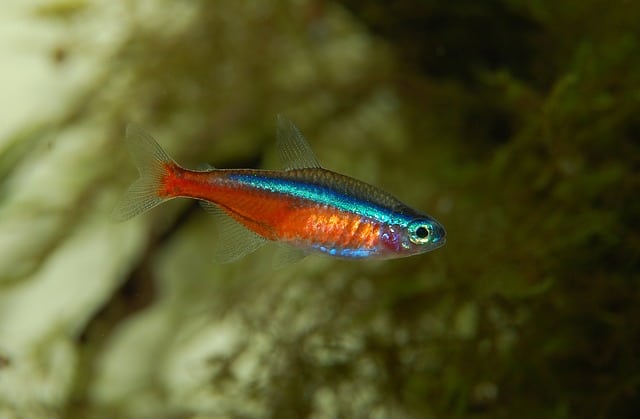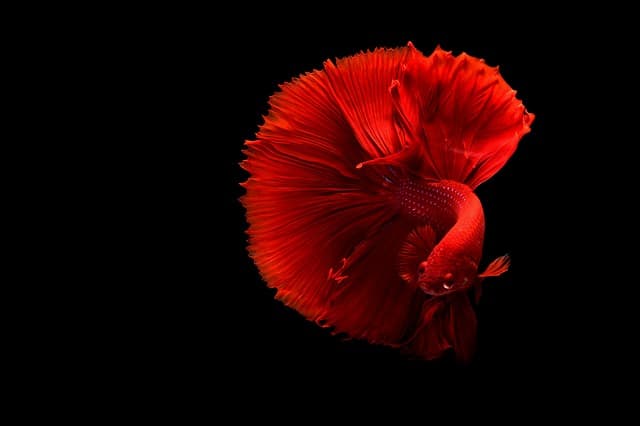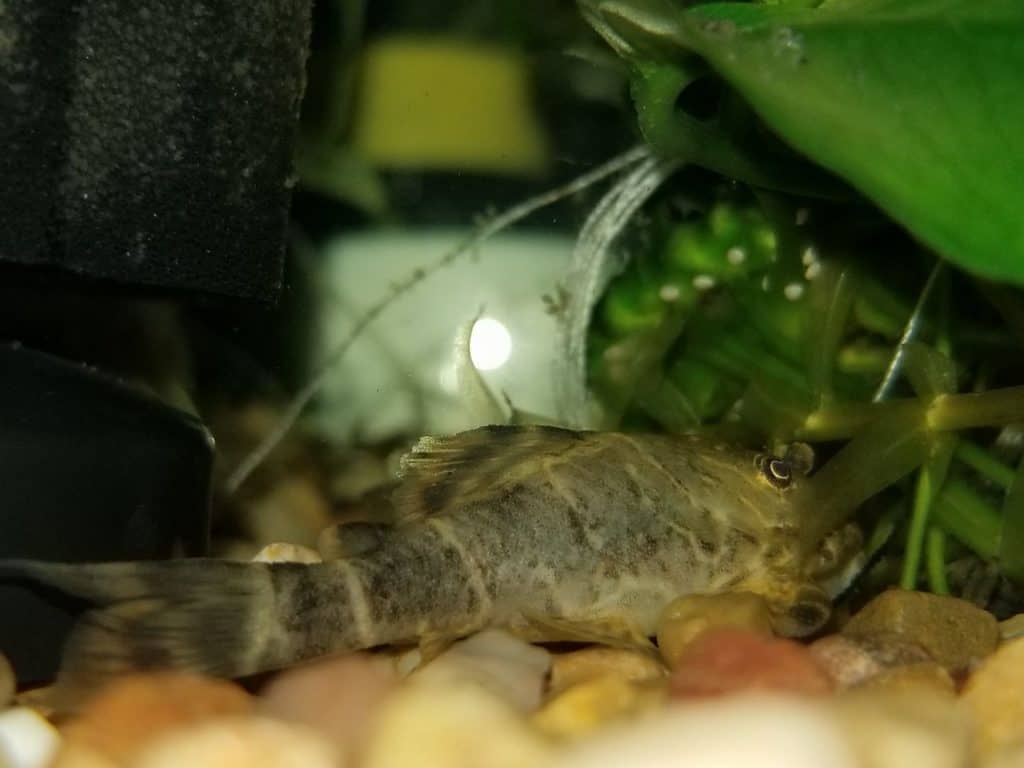Silver dollars are a species of tropical fish that closely resemble the piranha. Native to South America, these peaceful creatures are ideal for a community tank and add life to any aquarium with their shiny, metallic appearance. If you’re thinking of breeding your silver dollars, you may be wondering if it’s easy?
Silver dollars are easy to breed and require little in the way of assistance. The chances of successful breeding in captivity are greatly increased when fish are kept in groups of at least 6 and in a clean, large tank with soft, warm water.
Now that you know it isn’t difficult to breed silver dollar fish, let’s explore this topic together in more detail. We’ll discover how to sex this species, how many time a year they breed, and what to do to improve breeding success. We’ll also learn how to prepare silver dollars for breeding, what tank and/or water conditions are required, how long it takes for eggs to hatch, and if they eat their own offspring.
So, if you’re ready to learn all you need to know about the reproduction habits of silver dollar fish, then let’s begin!
How do You Sex Silver Dollars?
When it comes to most aquarium fish, there’re no distinctly obvious way to sex them. This holds true for silver dollars as well. Juveniles of this species can’t be easily sexed as they’re simply too small and look almost identical. Until they reach lengths of at least 4 inches, you likely won’t be able to tell them apart.
The only way to distinguish the adult silver dollar males from the females is to look at the anal fin. Males have a longer anal fin with a reddish tint near the front. Males also typically sport a black outline along tail fin. Males also exhibit changes in coloration prior to breeding while females remain the same.
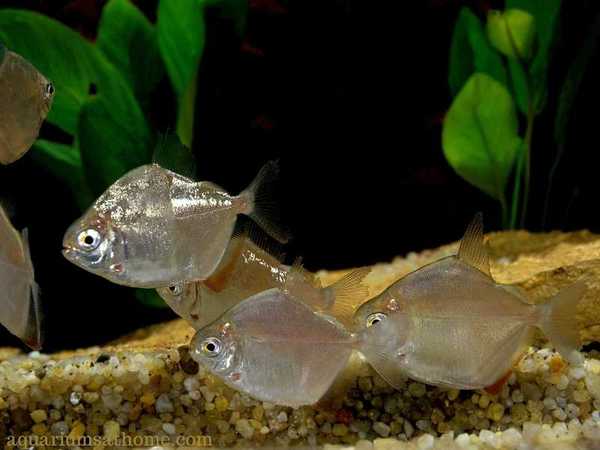
How Can You Tell when Silver Dollars are Ready to Breed?
Silver dollars reach sexual maturity at a year of age or when they reach a length of about 4 inches. When ready to spawn, the males chase after the females until they’re allowed to swim up beside them. The males then flick their bodies against the females, freeing their sperm while the eggs are being released.
When ready to breed, males also depict a change in coloration. They develop two large black spots behind the base of the pectoral fin. As well, the red hue near the front of the anal fin becomes darker. Females, on the other hand, show little to no variations in color prior to spawning.
How often do Silver Dollars Breed in Captivity?
Silver dollars in captivity will breed multiple times throughout the year under the right circumstances. Very little assistance is required on the part of the aquarist – apart from keeping the tank clean and safe, ensuring the water parameters are accurate and stable, and feeding the fish a varied, nutrient-rich diet.
If you only want your silver dollars to reproduce once or twice a year, you can try altering the water parameters. Since this species procreates in warmer, softer water, try lowering the temperature from 80 to 78 degrees Fahrenheit while raising the pH from a slightly acidic 4 or 5 to a more neutral 6 or 7.
Are Silver Dollars Live Bearers?
Silver dollars aren’t live bearers but rather egg layers. In fact, a pregnant female can lay up to 2000 eggs in a single breeding season! Unlike most species of egg-laying fish, silver dollars don’t build bubble nests, so it’s recommended you have some live plants in the tank for the eggs to adhere to.
Floating plants are great for a tank with silver dollar fish. Consider adding hornwort, java moss, or water lettuce to the aquarium prior to breeding. Not only do the plants provide a safe place for fertilized eggs to mature, but they also act as living filters to help keep the tank clean, oxygenated, and ammonia-free.
How Long does it Take for Silver Dollar Eggs to Hatch?
Following fertilization, silver dollar eggs will fall to the bottom of the tank or land atop plant leaves. In about 3 days, the eggs will hatch. Since this species isn’t carnivorous, there’s no threat to the keeping the offspring in the same tank as their parents.
If you prefer to raise the hatchlings separately (to increase their chances for survival), just scoop up the fertilized eggs from the substrate and place them on floating plants in the breeding tank. If the eggs are already attached to a floating plant, simply remove the plant and place it directly into the breeding tank.
Will Silver Dollars Eat Their Own Offspring?
Silver dollar fish are mainly herbivores, so they won’t eat their own offspring or other fish for that matter. That said, they do enjoy the odd meaty treat on occasion, especially during the breeding season when protein-rich foods are required. They’re classified as omnivores but prefer a ‘green’ diet.
Though silver dollar fish don’t eat their own eggs or offspring, that’s not to say other tankmates won’t. When attempting to breed this species in captivity, make sure they share their aquarium with other peaceful, herbivorous fish.
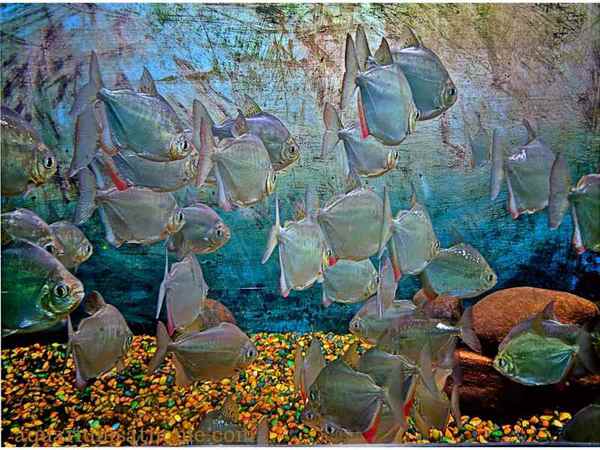
How Many Silver Dollars Should You Keep for Breeding Purposes?
For breeding purposes, the best thing to do is to purchase at least 6 juveniles and raise them together. This will increase the chances of a successful male/female pairing. Silver dollars are a shoaling fish, meaning they thrive in the company of others and typically don’t do well in a community tank alone.
What Tank Conditions are Needed to Breed Silver Dollars?
To breed silver dollar fish in captivity, you must ensure the tank is large enough. If you have a shoal of 5 or 6, then you must have a 75-gallon tank minimum. The tank should also contain plants to act as hiding places for courting fish and homes for fertilized eggs. Plants will also provide refuge for the hatchlings.
A clean, safe aquatic environment is also key to successfully breeding silver dollar fish. Make sure to do partial water changes (15-25%) weekly to keep the tank free of toxic ammonia. As well, when replacing the water, ensure it’s as close to the exiting temperature in the tank as possible.
In terms of water conditions, silver dollars don’t like fluctuations so keeping the parameters stable will improve the likelihood of successful breeding. Warmer, softer water with a temperature around 80 to 82 degrees Fahrenheit, a pH of 3.8 to 5.3 and a hardness factor of 8 dgH or less is recommended.
How to Improve the Chances of Successful Silver Dollar Fish Breeding?
To increase the chances of silver dollar fish reproducing successfully in captivity, it’s recommended you condition the males and females for 7 to 10 days prior to breeding. Move them to a separate breeding tank with warmer, softer water and plenty of fine-leafed, floating plants.
It’s important you offer silver dollar fish a variety of nutrient-rich, plant-based foods such as spirulina, lettuce, spinach, and watercress in preparation for breeding. Since these fish tend to be hungrier during courtship, feed them up to 3 times a day with enough food to consume in 3 to 5 minutes.
Final Thoughts
To summarize, silver dollar fish are easy to breed in captivity. To improve the chances of successful reproduction, keep them in groups of 6 in a large, clean tank with soft, warm water. The temperature should be at least 80-degrees Fahrenheit with a lower pH around 4 and a hardness of less than 8dgH.
I hope this article has been of help and answered any question you have regarding the reproductive habits of silver dollar fish in captivity. Thanks for reading and good luck with your aquarium hobby.
Recommended Posts
Are Silver Dollar Fish Fin Nippers?
Pictus Catfish Care and Tank Setup (Tank Mates, Breeding, Behaviour)
What Aquarium Fish are Fin Nippers?
Are Silver Dollar Fish Related to Piranha?
15 Best Tankmates for Silver Dollar Fish



